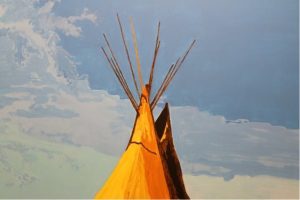Introduction
Overview – Land Acknowledgments Informational Video Series – Original and Contemporary Views

Indigenous populations throughout time have utilized storytelling and oral tradition to describe the balance between themselves and the land, all living creatures, and beyond (Woodhouse, 2011). Storytelling practices have been used as an educational tool for passing knowledge from one generation to the next or from one population to another. The Land Acknowledgments Informational Video Series – Original and Contemporary Views project employs digital storytelling captured in this Open Educational Resource. It offers a series of short videos intending to tell some of the history and stories connected to the Land Acknowledgement processes that are becoming commonplace at events where recognition is important and expected. The videos are based on the history of Land Acknowledgments and how they have evolved into the present day. The series starts with pre-contact (Europeans) travel through the contemporary views and offers interpretations of the variety of sources of information that informed Indigenous peoples and non-Indigenous settlers, such as wampum belts, wampum strings, location trees, and historical artifacts that influence locations today.
Instructors can integrate some or all of the videos containing digital Indigenous content into their courses’ curriculum as needed. This instructor guide is the source listing all of the videos in the series and descriptors about what each video contains.
End-users can link to one or more videos, embed the material into their websites, or download a video to use offline. End-users cannot, however, make any derivatives of the video material.
References
Woodhouse, H. (2011). Storytelling in university education: Emotion, teachable moments, and the value of life. The Journal of Educational Thought (JET)/Revue de la Pensée Educative, 45(3), 211-238.

